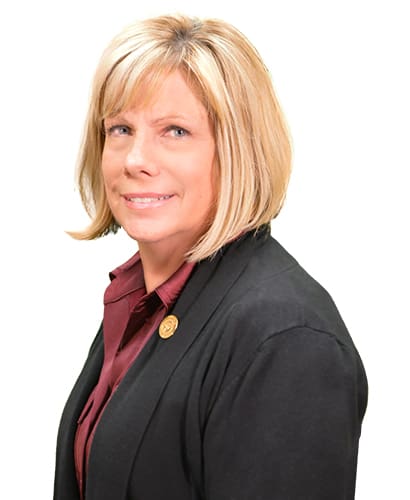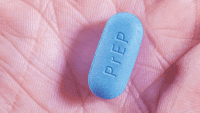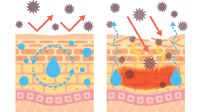Telephone advice nurses first came into practice in the 1970s. At that time, nurses would talk with patients over the phone to discuss home care for illnesses, manage medication refills, and discuss lab results (Mataxen & Webb, 2019). Telephone advice nurses are vital members of the pediatric health care team. By the time a child turns 18 years old, they will have had a minimum of 28 well visits to their pediatrician; this does not include any sick care visits (American Academy of Pediatrics, 2023). The American Academy of Pediatrics (2023) emphasizes the need for preventative care. Parents seek guidance and advice from the pediatric team while caring for their growing children.
Not every concern or illness requires a visit to the office; triage nurses can assist parents with decision-making and provide advice on managing care. They can also guide a parent to the most appropriate level of care when an evaluation is warranted (American Academy of Ambulatory Care, 2018). Telephone triage requires that the nurse collect the necessary information to guide a family regarding the child’s care. Since the start of the COVID-19 pandemic in 2020 and a brutal Respiratory Syncytial Virus (RSV) and influenza season in late 2022, remote triage has become increasingly necessary and integral to the patient care experience (Farzandipour et al., 2023).
With the onset of the Covid-19 pandemic, waivers were put in place allowing for increased remote interactions between the patient and healthcare team. The value of these interactions was seen and now many insurance companies continue to provide reimbursement for complex or lengthy management of a patient through telephone triage (Centers for Medicare & Medicaid Services, 2023). The goals of the triage call include collecting necessary information, selecting a proper disposition, providing care advice, and verifying understanding.
Telephone advice can improve access to care. Staffing shortages, lack of access, and hospital closings are significant issues facing the country. Remote access can help close some of these gaps that exist. A patient or caregiver can contact their provider’s office for medical advice using the telephone, no matter where they are. If they are away on vacation, the child is at school, or the family cannot travel to the office for an appointment, a nurse can guide them by determining the most appropriate level of care needed (American Telehealth Association, 2021).
Telephone triage has many benefits. It reduces costs. Telephone triage nurses can provide care advice to keep patients from unnecessary emergency room use (American Telehealth Association, 2021). Discussing symptoms allows the nurse to identify urgent concerns and guide the patient to the most appropriate disposition (Schmitt, 2018). Primary care office visit needs are anticipated to increase to 565 million by 2025, requiring 52,000 more full-time primary care providers (Agency for Healthcare Research and Quality, 2017). In a survey conducted of healthcare workers, Sinsky et al. (2021) determined that one out every three physicians and advance practice nurses planned to reduce their hours worked while one of five of physicians planned to retire soon. In addition, the shortage of primary care providers is projected to be between 17,800 and 48,800 by 2035 (IHS Markit Ltd., 2021). Patients and caregivers have reported feeling a sense of support and reassurance after receiving telephone advice from a triage nurse (Mataxen & Webb, 2019). Triage nurses can educate patients on home care and reassure them if an in-office visit can wait due to limited access to an appointment in the office.
Steps in the triage process include:
- Collecting needed information, such as caller phone number and patient health information.
- Having the family member describe the reason for the call, being a good listener (Mataxen & Webb, 2019).
- Identifying and prioritizing symptoms, triaging the most acute symptoms first. While collecting information, ask questions in easy-to-understand terms and try to ask yes/no questions. For example, instead of asking, “Is the child retracting?” you should describe retractions “Do you see the muscles around the belly and ribcage sucking in when breathing in or out?” You will also need to determine when the symptoms started. Have they been present for hours, days, or weeks? One of the most important questions to ask during intake is “How is the child acting?” or “Is this symptom affecting the child’s activity level, and if so, how?”
- Using the resources available. Resources include telephone triage books and computer software products with protocols built into the electronic medical record. These resources help guide nurses throughout the triage process in asking the right questions, assessing acuity level, determining disposition, and recommending care advice.
- Deciding on the most appropriate steps to take. It is always a good idea to ask what the parent has tried at home to guide your instruction. For example, maybe they have attempted bulb suction but without saline. Praise them for using suction but instruct them to use saline in addition to the suction, which may help make suctioning more effective. This reinforces confidence in the parent’s ability to care for their child’s symptoms at home (Schmitt, 2018).
- Ensuring the family member understands using the teach-back method You can ask the parent, “What questions do you have for me?” and “Can you tell me the three things we just went over regarding home care?” This is a key step that you do not want to overlook. Studies have shown that patients only remember about 50% of the information given by healthcare providers (Laws et al., 2018).
- Providing the parent with a list of reasons to call back. Give them a clear time frame to guide them. “If symptoms persist after five days, you should call the office again or sooner if any new or worsening symptoms develop.” Tell them what worsening symptoms to watch for, like “Increase work of breathing, fever returns, cough is disruptive to sleep or causing the child to vomit.”
- Thanking the parent for calling and answering any questions they may still have. After the call, it is essential to document the conversation. Details to include in your documentation are whom you spoke with, all subjective information collected, care advice given, and acknowledgment of understanding. Sometimes, the caller may disagree with the guidance; be sure to document this and the caller’s intentions. Remember to record professionally, unbiasedly, and accurately. A text box is provided to demonstrate documentation from the phone call.
- Telephone triage is not a means to keep a patient from coming into the office.
- If the parent is asking for their child to be seen in the office or it sounds like the patient should be seen, then make sure an appointment is scheduled.
- If the parent has called about the same problem more than once, an appointment should be scheduled to evaluate in the office.
- If there is any doubt about the information provided by the parent or if the child sounds sick, they should be seen.
- Remember, most phones have a hold button, so if you need a moment to collect your thoughts or consult with a provider, place that caller on a brief hold.
- Always use your critical thinking skills and trust your instincts.
Some key takeaways to remember when providing telephone triage:
Telephone triage is a skill that takes time to develop. Initially, it may feel awkward and like you are moving slowly, but gaining experience will make you more efficient.
Documentation Example
Spoke with Mother regarding fever concerns. Child is a 3-year-old male with no PMH. Fever began 2 days ago. Fevers ranging from 100-103. No other symptoms at this time and no recent vaccinations. Mom reports child is not eating well, but drinking enough fluids that he continues to urinate at least every 6 hours. Fevers respond to Tylenol when given, mom states she is administering 5ml (160mg/5ml concentration) every 4 hours as needed. Mother asking when she should have child evaluated for continued fevers.
Advised Mother to continue using Tylenol as needed, dosage she is giving is appropriate for child’s weight. Instructed to dress child in a single light layer of clothing, push fluids, allow for plenty of rest. Monitor urine output closely, if not urinating a minimum of every 8 hours child needs to be evaluated. Discussed fevers should resolve after 72 hours, if they continue to persist have child evaluated. Mother expressed understanding. Utilized teach back method to confirm understanding of instructions.
Telephone triage has been around for decades but has become increasingly important with the emergence of the COVID-19 pandemic. The goals of the triage nurse are to collect necessary information regarding the child’s symptoms, determine the best disposition, and give good, sound advice. This can be done using a who, what, when, where, and why approach to the call. Telephone triage requires professional nursing judgment, critical thinking skills, and a trusting relationship between the parent and the health care team. With the changing healthcare environment and increasing demand for access to care, telephone triage will continue to be an essential aspect of nursing care for patients and their caregivers. Triage nurses are becoming increasingly valuable with the nursing shortage and the lack of resources available to provide care. The triage nurse may not physically touch their patient, but impacts the workload of those nurses who do.


























